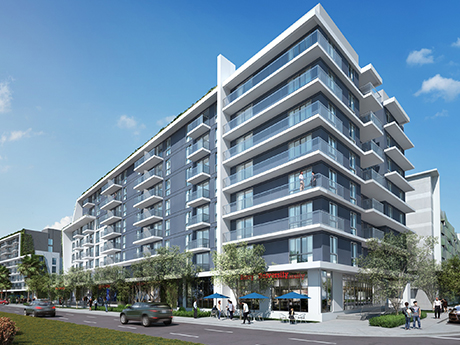The housing affordability crisis has left millions of families searching for options that fit their budgets. To meet the demand for affordable housing, residential real estate developers are increasingly turning to multifamily buildings as a solution. At the core of this shift is the emphasis on efficiency in the construction process. By streamlining operations, adopting innovative techniques, and reducing waste, developers are finding ways to lower costs without compromising quality or sustainability.
The Role of Multifamily Housing in Affordable Living
Multifamily housing—such as apartment complexes, duplexes, and townhomes—offers economies of scale that single-family homes cannot match. By building multiple units in one structure, developers can share land costs, infrastructure investments, and utility expenses across many residences. These shared costs make it possible to lower the price of individual units, making them more accessible to low-income families.
However, affordability does not come automatically. Construction costs often make up a significant portion of housing expenses. To make multifamily housing truly cost-effective, developers must focus on improving efficiency at every stage of the building process.
Streamlined Design and Planning
The foundation of efficient construction lies in meticulous design and planning. Developers are increasingly relying on standardized layouts and repeatable designs to simplify the construction process. Instead of customizing every building from the ground up, they use proven blueprints that are optimized for functionality and cost.
Building Information Modeling (BIM) is a key tool in this phase. BIM software allows developers to create detailed digital models of a project before construction begins. These models can identify potential problems early, reducing costly delays or redesigns during the building phase. By coordinating all aspects of the project—structural, mechanical, and electrical—BIM ensures that the construction process proceeds smoothly and efficiently.
Prefabrication and Modular Construction
Prefabrication and modular construction are revolutionizing how multifamily housing is built. In prefabrication, components of a building—such as walls, floors, or roof sections—are manufactured in a controlled factory environment and then transported to the construction site for assembly. Modular construction takes this concept further by producing entire sections or modules of a building offsite.
These methods significantly reduce on-site construction time, lowering labor costs and minimizing weather-related delays. In addition, factory environments allow for precise quality control and reduce material waste, further contributing to cost savings. Modular construction also offers flexibility, enabling developers to adapt designs to different locations or market needs while maintaining efficiency.
Sustainable Materials and Techniques
Sustainability and efficiency often go hand in hand. By incorporating sustainable materials and techniques into construction, developers can achieve long-term cost savings while also reducing environmental impact.
For example, high-performance insulation and energy-efficient windows not only lower energy costs for future residents but also simplify the construction process by meeting multiple performance standards in a single step. Similarly, using recycled or locally sourced materials can reduce both transportation costs and waste.
Innovative construction techniques, such as 3D printing of building components, are also gaining traction. These methods allow for faster construction with fewer resources, making them particularly well-suited to multifamily housing projects.
Optimizing Labor and Reducing Delays
Labor costs represent a significant portion of construction expenses, so efficient workforce management is critical. Developers are increasingly adopting project management software to coordinate schedules, track progress, and allocate resources effectively. This ensures that labor teams are working on tasks at the right time, avoiding idle periods or overlapping efforts.
Another strategy involves partnering with specialized contractors who are experienced in multifamily construction. These contractors are familiar with the unique challenges of large-scale projects and can execute tasks more efficiently than general contractors.
Delays are another major cost driver in construction. By investing in pre-construction planning and risk management, developers can identify potential bottlenecks or challenges and address them proactively. This might include securing permits early, coordinating with utility providers, or ensuring timely delivery of materials.
Reducing Material Waste
Construction waste accounts for a significant portion of project costs. To combat this, developers are adopting practices that minimize material waste, such as precise cutting techniques, careful inventory management, and recycling leftover materials.
Digital tools also play a role in waste reduction. Software can calculate exactly how much material is needed for a project, ensuring that orders match requirements. This not only lowers costs but also contributes to environmental sustainability, an increasingly important consideration for modern housing developments.
Collaborative Partnerships
Collaboration among stakeholders—architects, engineers, contractors, and suppliers—is another way to boost efficiency. When all parties work together from the outset, they can align on goals, identify cost-saving opportunities, and streamline communication.
For instance, early involvement of contractors in the design phase allows them to provide input on constructability and cost-effectiveness. Similarly, close coordination with suppliers can ensure that materials are delivered just in time, reducing storage costs and potential damage.
The Future of Affordable Multifamily Housing
As the demand for affordable housing continues to grow, efficiency in multifamily construction will remain a top priority. Developers are not only focused on cutting costs but also on creating homes that meet the needs of low-income families without sacrificing quality or comfort.
By embracing standardized designs, innovative construction methods, and sustainable practices, the industry is paving the way for more affordable housing solutions. Multifamily housing stands as a testament to how thoughtful planning and efficiency can make a meaningful difference in the lives of millions.
Affordable housing is not just about reducing costs—it’s about building communities and creating opportunities for families to thrive. Through efficient construction processes, developers are helping to make that vision a reality.

